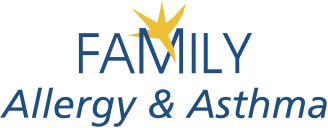10 Tips for Cleaning with Your Allergies in Mind

After holing up in our homes this winter, it’s a great time to roll up those sleeves and put some elbow grease into deep cleaning your home. While this can be a welcoming activity for some, for those with allergies, it can be more of a necessary evil. Cleaning stirs up all kinds of allergens like dust, dust mites, mold spores, pollen, and animal dander, which can cause allergy symptoms to worsen.
If you feel that looming cleaning dread, here are ten tips for cleaning with your allergies in mind!
1. Clean high to low
Start cleaning the highest spots and work your way down. Cleaning of any kind stirs up dust and particles into the air. Cleaning from high to low will help make sure you catch more of the dust and don’t leave any behind.
Tip: Clean your floors last.
2. Wear a mask when you clean
Masks are a highly effective way to keep allergens from entering your body. The mask will help filter out those particles that you would naturally breathe in as you clean. They can also help decrease the inhalation of chemicals. As you pull out cleaning solutions like bleach, masks will help protect your lungs from any harmful fumes.
Tip: Try an N-95 mask.
3. Don’t use scented cleaners
The heavy fragrances in some cleaners can trigger allergy or asthma symptoms, irritating your airways. Look for fragrance free cleaners and products.
Tip: A natural way to fill your home with a fresh aroma is by simmering sliced lemons or crushing mint leaves. You get the freshness without the irritation.
4. Use a damp cloth when cleaning
Using a dry cloth is a less effective way of cleaning. However, a cloth dampened with water or furniture polish will help trap that dust instead of brushing it into the air or onto the floor.
Tip: Try using a microfiber cloth. Microfiber attracts dust much better than a regular cloth or paper towel, plus the fabric is non-abrasive so it won’t scratch your surfaces.
5. Use a vacuum instead of a broom
Using a broom kicks up more dust than it removes. If you want to capture the allergens instead of pushing them around, a vacuum is your best option. The dust and allergens won’t float through the air if they are sucked up.
Tip: Make sure you’re using a central vacuum or a vacuum with a high-efficiency particulate absorbing (HEPA) filter. These filters are made to trap allergens so they don’t make it back into the air.
6. Clean the air
Filtering the air that circulates in your home is a good way to get rid of airborne allergens. Make sure you replace your air filters every 3-6 months with an allergy-friendly filter. Check out the ACAAI’s filter recommendations to find the right fit for you. Portable air cleaners can also help keep allergens down while cleaning.
7. Keep windows closed
Fight the urge to open those windows and let the breeze in. We know it’s hard, but it’s an invitation for outdoor allergens like pollen to flood your home!
Tip: This goes for your car too! Keeping your windows up can help keep pollen from hanging around while driving about town.
8. Reduce clutter
Clutter, storage boxes, knickknacks, and extra clothes can be a haven for dust and other allergens! Moving those items around will make cleaning more difficult and kick up unnecessary dust particles into the air. Spring cleaning is a great time to consider donating, selling, and throwing out any extra items you no longer need or want.
Tip: For items that you want to keep, consider clear plastic storage bins that can be stored in the basement or attic where they are out of the way.
9. Leave the Home After Cleaning
As you clean, you stir up air born allergens like dust mites and dander. It takes time for those particles to settle back down, and while they’re in the air, they could trigger your allergy symptoms. It could be a good time to celebrate all the cleaning you did and drop off those decluttered donations.
10. Ask for help
Remember it’s okay to ask your friends and family for help. Cleaning that damp, dusty corner isn’t worth the allergic symptoms. If someone around you is better suited to a task, it’s okay to ask. If something seems hazardous, you can also search for professional cleaners in your area.
Now that we’ve armed you with the knowledge, all that’s left is for you to arm yourself with a vacuum and supplies. Happy cleaning!
To learn more about Allergies and Asthma, make sure you follow us on social media and check our education section on our website.
